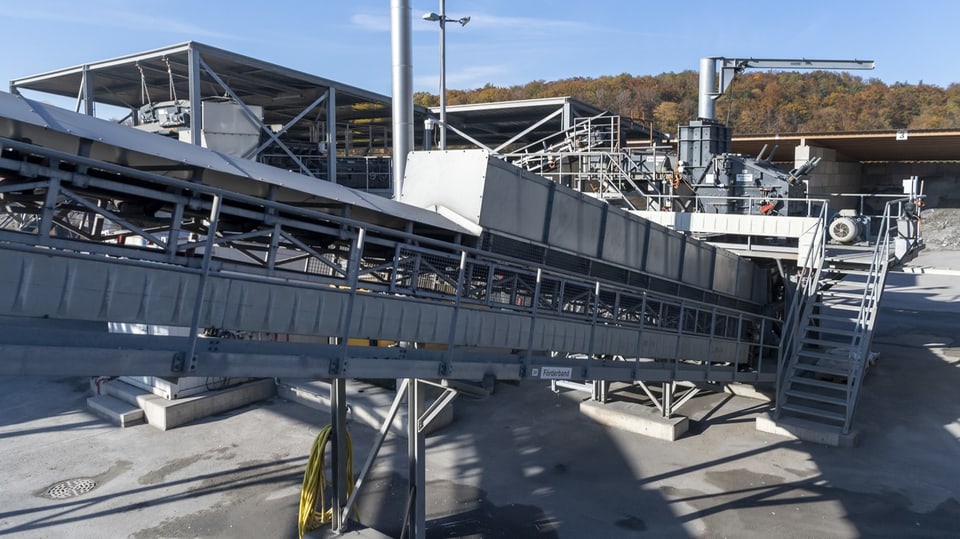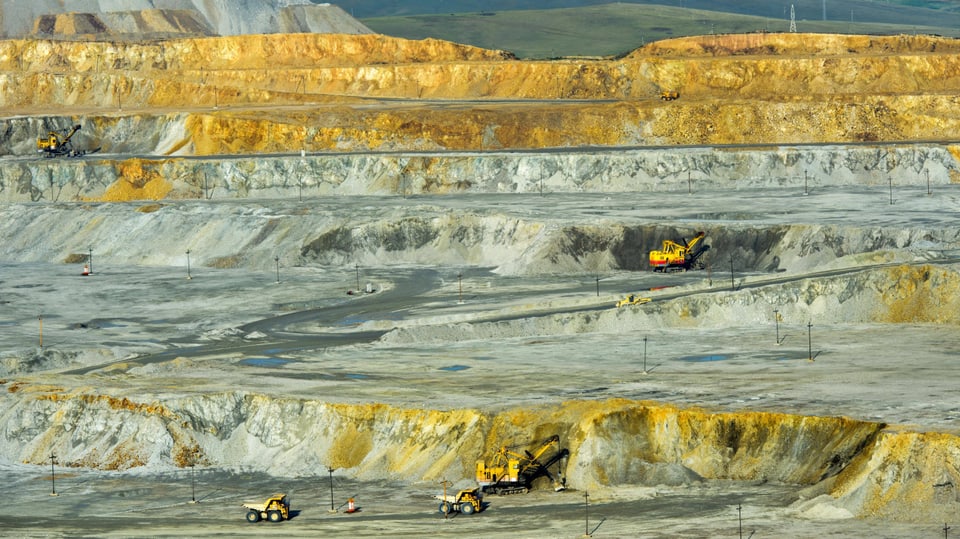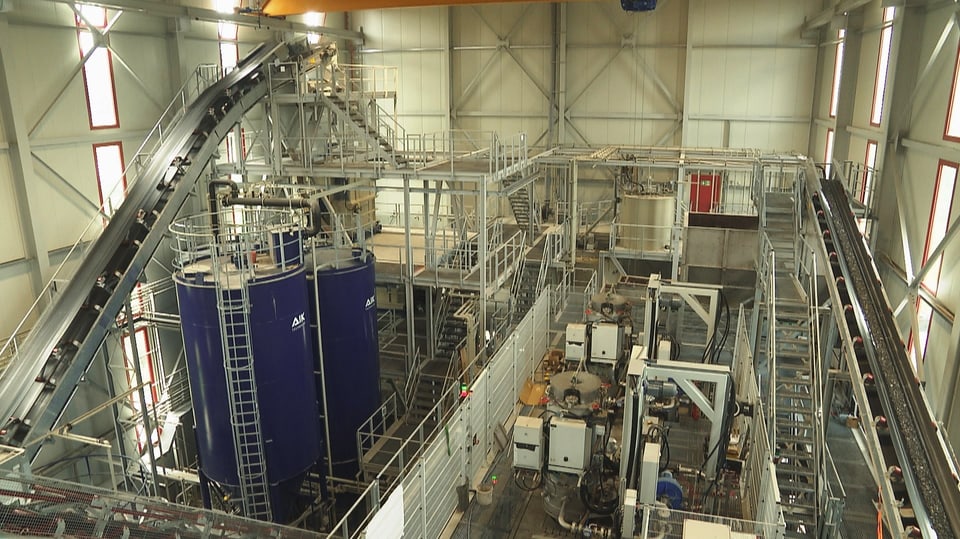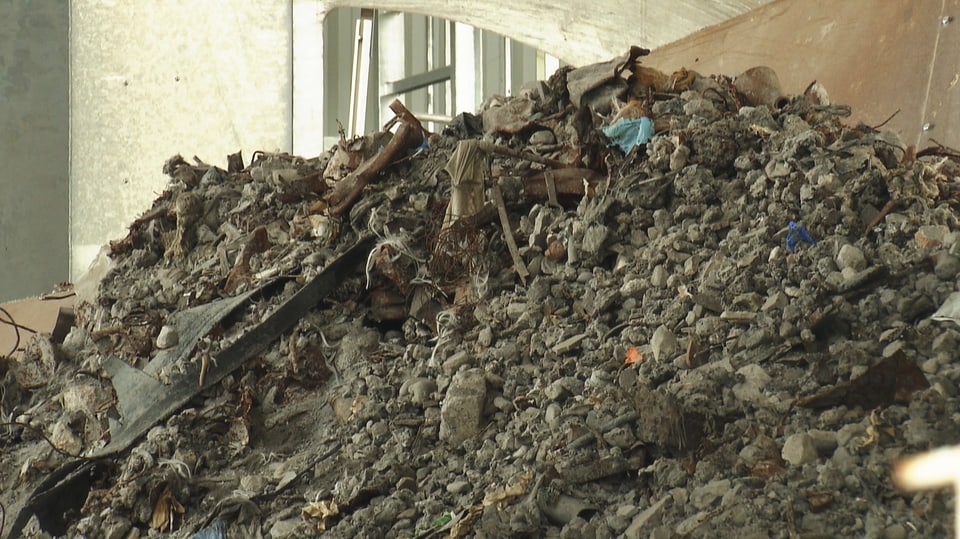Contents
Money can be made from the residues of waste incineration. A business that also involves risks.
The problem: Waste from households and businesses is incinerated in Switzerland in waste incineration plants (WIP). However, not everything burns in the ovens. About 800,000 tons of slag remain per year. These incineration residues are toxic and are then sent to landfills. However, there are still valuable materials in the bottom ash.
Legend:
Bottom ash delivered from a waste incineration plant to a recycling plant.
SRF / Mario Gutknecht
Metals in the slag: Coarse metal residues have long had to be filtered out of the slag before the slag is finally disposed of in landfills. This is required by law. In Switzerland there are a dozen systems that have been further developed in recent years. One plant is in Arisdorf (BL).

Legend:
The metal recovery plant in Arisdorf cost five million francs. This was paid for by the canton of Baselland.
Keystone / Georgios Kefalas
The new facility: The most modern plant in Switzerland has been in operation in Full-Reuenthal (AG) since this spring. This goes even further than previous recycling systems by separating the slag using a process. With electrical impulses, a kind of lightning, the slag is separated into the finest individual parts. In this way it should be possible to get more metal residues out of the slag than anywhere else.
The ecological benefit: It goes without saying that recycling is good for the environment. Especially when it comes to metals that are otherwise often mined in third world or emerging countries under ecologically questionable conditions and then have to be transported to Switzerland. “Every ton that we get out here is a ton that doesn’t have to be got out there,” says Rainer Bunge, professor of environmental technology at the Eastern Swiss University of Applied Sciences. 80,000 tons of metal could be extracted from slag in Switzerland.

Legend:
The extraction of metals often causes serious damage in nature. Pictured: a copper mine in Mongolia.
Imago / imageBROKER / Guenter Fischer
The economic benefit: Of course, the recycling companies don’t just work out of love for the environment. On the one hand, the KVA pays the recycling companies money so that they take over the slag. These fees are lower than those that the MSWI would have to pay to the landfills. On the other hand, the companies sell the raw materials that they get from the bottom ash. In the case of Full-Reuenthal, these are eight different metals, as well as iron oxide and minerals. Thanks to this business, ZAV Recycling in Hinwil (ZH) has made millions in profits in recent years.
The economic difficulties: The treatment of the slag is complex and requires a lot of energy. In addition, prices for metals on the world market fluctuate greatly. If prices fall, companies can no longer sell their raw materials profitably. This is what happened in 2019 when ZAV Recycling AG lost millions. In contrast, the modern plants have practically no personnel costs, they are highly automated.

Legend:
The new facility in Full-Reuenthal (AG) is located in a large hall. This is deserted, practically everything works automatically.
SRF / Mario Gutknecht
There are still leftovers: Even in the newest plant in Full-Reuenthal (AG) – as in other plants – not all of the slag can be recycled. The degree of recycling is currently around 30 percent, explains Anton Affentranger, Chairman of the Board of Directors of Selfrag, which operates the system. With further refinements, up to 50 percent of the bottom ash can be recycled. The rest, however, continues to be deposited.
Further systems planned: The company Selfrag intends to put up to six new, similar recycling plants into operation over the next five years. First in Kerzers (FR), where there is already a smaller test facility, and then in other places in Switzerland. Good for the environment and apparently also good for business.
